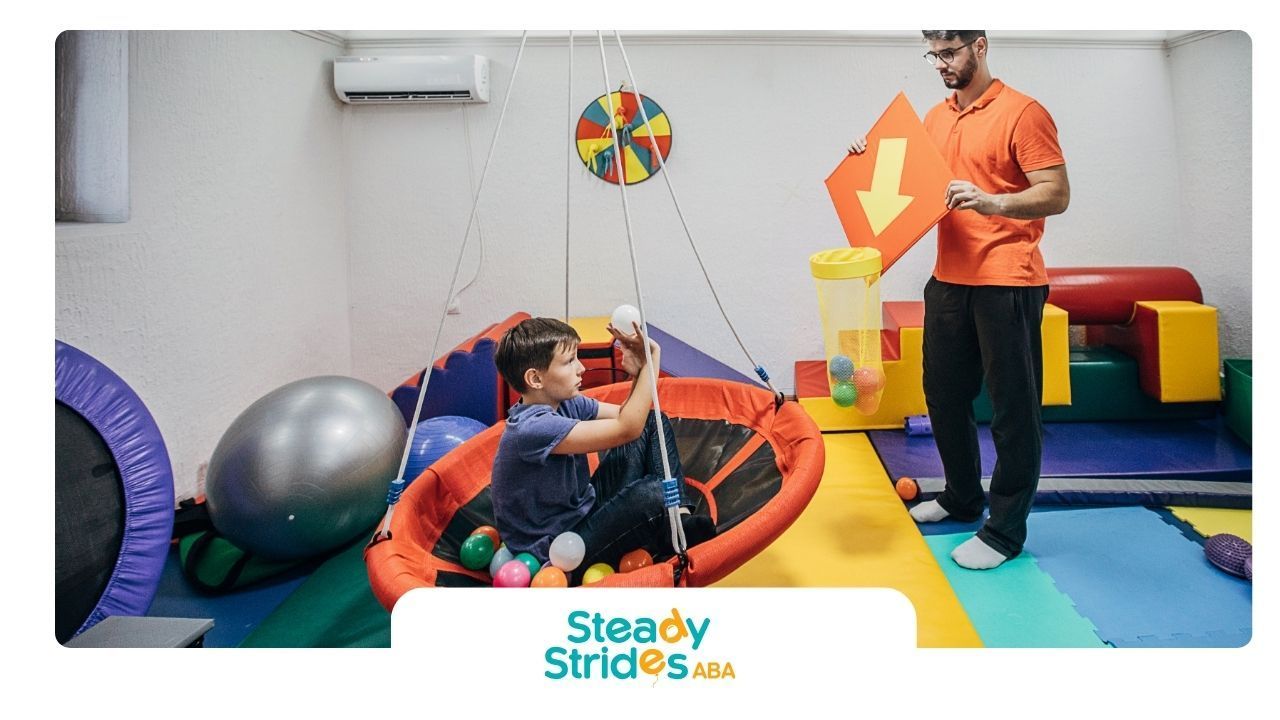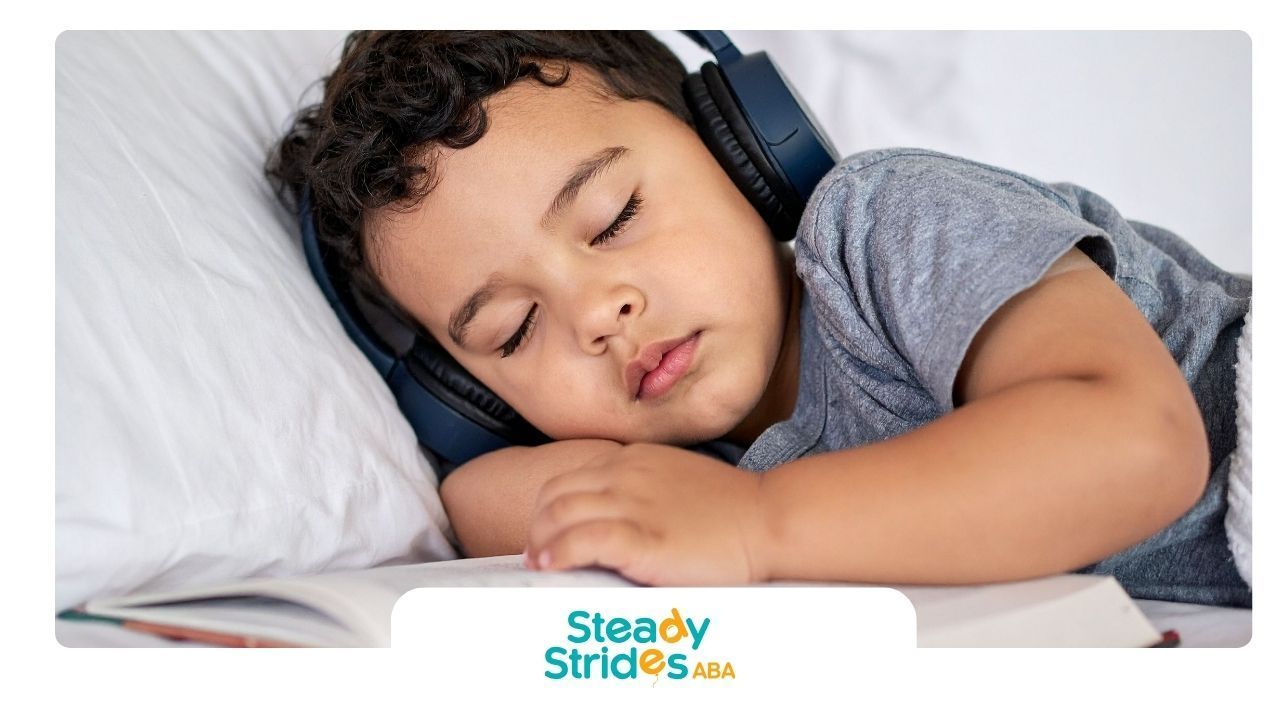Key Highlights
- Activities of daily living (ADLs) are crucial self-care tasks that help autistic children develop independence and enhance their quality of life.
- Teaching daily living skills, like dressing, eating, and personal hygiene, promotes confidence and reduces reliance on caregivers.
- Proper strategies, including task analysis, visual schedules, and positive reinforcement, simplify these tasks and make the learning process more effective.
- Addressing challenges such as sensory input sensitivities and motor difficulties enables children to master essential skills.
- Implementing adaptive behavior approaches in collaboration with families and therapists boosts success across home, school, and community settings.
Independence begins with the everyday. Teaching life skills to autistic children isn’t just possible—it can be fun, too.
A parent in home-based ABA therapy once told me, “I never thought my son would button his own shirt.” With a few weeks of visuals and practice, he was doing it with pride. That’s the kind of real-life progress this blog is here to help you achieve.
What are ADL Activities for Autistic Children?
Defining ADLs and Their Importance
ADLs are everyday tasks like eating, dressing, and grooming that help individuals care for themselves. For autistic children, mastering these tasks supports autonomy, reduces dependency, and opens up greater social and community participation.
Occupational therapy can play a key role by addressing specific challenges like sensory input and sequencing. Building these skills promotes a sense of accomplishment and inclusion.
How ADLs Support Independence in Autism
Building Confidence Through Everyday Tasks
ADLs help children gain control over their routines. When a child can manage tasks like washing hands or choosing clothes, their confidence grows and their need for support lessens.
These daily tasks also encourage participation in school and social settings. By breaking down each task and celebrating progress, caregivers support steady, meaningful growth.
Key Categories of ADL Skills
Core Life Skills to Focus On
Daily living skills are typically grouped into areas such as:
- Personal hygiene (brushing teeth, bathing)
- Dressing and grooming
- Eating and simple food preparation
- Social participation
These routines are especially valuable when tailored to each child's sensory preferences and learning pace.
Personal Care and Hygiene Routines
Making Hygiene Tasks Manageable
Personal hygiene helps promote health and builds self-esteem. Tasks like brushing teeth or washing hands can be challenging for autistic children, especially those with sensory sensitivities.
Tips for Teaching Hygiene:
- Break tasks into clear steps (e.g., “Put toothpaste on brush”).
- Use visual aids or picture cards for each step.
- Choose sensory-friendly products (unscented soaps, soft towels).
- Keep routines consistent to build familiarity and comfort.
Dressing and Clothing Choices
Encouraging Independence with Clothing
Getting dressed is a daily opportunity to practice independence. Many children on the spectrum face challenges with textures or motor coordination when using buttons or zippers.
Strategies That Help:
- Use visual dressing charts with step-by-step images.
- Choose soft, tagless clothing to reduce sensory discomfort.
- Practice grooming tasks (like combing hair) in low-stress environments.
- Offer choices to give children more control.
Eating, Mealtime, and Simple Food Prep
Making Mealtime Easier and More Engaging
Mealtimes offer many chances to teach motor planning and life skills. Children can start with basic steps like washing hands, setting the table, or stirring ingredients.
Mealtime Tips:
- Start with familiar foods and gently introduce new textures.
- Use picture cards to outline each step of a meal.
- Offer easy-to-hold utensils or adaptive tools.
- Celebrate small milestones like pouring a drink or peeling fruit.
Fun Ways to Teach ADL Skills at Home
Turning Everyday Tasks into Play
Learning doesn't have to be boring. Turning chores into fun learning moments helps autistic children stay engaged and motivated.
Ideas for Making It Fun:
- Turn tooth brushing into a sing-along activity.
- Use laundry sorting as a game involving color or texture.
- Turn food prep into a sensory activity (e.g., kneading dough).
- Celebrate every small success with positive feedback or a reward chart.
Using Visual Schedules and Step-by-Step Guides
Clear Instructions Reduce Frustration
Visual tools are highly effective for many autistic children. They provide structure and reduce anxiety by showing exactly what to expect.
Helpful Tools:
- Task cards for each ADL step (e.g., “Put on socks”).
- Charts for full routines like bathing or getting dressed.
- Color-coded systems to show priority steps.
- Timers to manage transitions and encourage time awareness.
Turning Chores Into Playful Learning Activities
Combining Sensory and Functional Skills
Daily chores like folding laundry or setting the table can become playful learning experiences with just a little creativity.
Tips:
- Use soft or textured items during chores to create sensory interest.
- Turn organizing tasks into sorting games.
- Let children choose music or rewards to stay motivated.
- Practice during calm, predictable parts of the day.
Overcoming Common Challenges with ADLs
When Tasks Feel Overwhelming
Some children resist ADLs due to sensory overload or trouble understanding routines. These obstacles can be addressed with the right supports.
What Helps:
- Break complex tasks into smaller steps.
- Use consistent routines and supportive visuals.
- Celebrate effort, not just outcomes.
- Gradually increase independence based on comfort level.
Addressing Sensory Sensitivities in Daily Tasks
Creating a Supportive Environment
Children may react strongly to sounds, textures, or smells. Understanding and accommodating these sensory needs is essential.
Tips for Sensory-Friendly Routines:
- Let children choose textures or tools they prefer.
- Use soft lighting and calming sounds during routines.
- Provide sensory breaks if tasks become overwhelming.
Building Motivation and Positive Reinforcement
Encouraging Progress Through Praise
Motivation grows when children feel their efforts are recognized. Reinforcing small wins builds long-term habits and confidence.
Ideas for Encouragement:
- Offer stickers or simple rewards.
- Use a visual “success chart” to track progress.
- Give specific praise like, “You did a great job putting on your shoes!”
Working Together: Family and Therapists Supporting ADLs
Why Collaboration Matters
Consistency across home, school, and therapy makes skill-building more effective. When families and professionals communicate, children benefit.
Ways to Collaborate:
- Share visual tools and routines between settings.
- Discuss what's working (or not) in regular check-ins.
- Use a shared progress chart to align goals.
Collaborative Strategies for Consistency Across Settings
Helping Children Thrive in Any Environment
Whether at school, home, or in the community, daily living tasks should follow a similar structure.
Tools for Consistency:
- Universal visual schedules.
- Shared task breakdowns (e.g., same steps for tooth brushing).
- Joint celebration of progress.
Celebrating Progress: Small Wins and Milestones
Building Self-Esteem One Step at a Time
Every accomplishment, no matter how small, deserves recognition. These moments reinforce effort and build the child’s confidence.
Ways to Celebrate:
- Use a visual milestone tracker.
- Share wins with family or teachers.
- Create a “skill storybook” showing tasks the child has mastered.
Conclusion
Supporting Independence Through Daily Routines
Helping autistic children build ADL skills fosters independence, confidence, and inclusion. Using clear strategies—like visual aids, task breakdowns, and sensory supports—can make daily routines more manageable and meaningful.
Celebrate every step forward. With the right support from families and therapists, autistic children can thrive at home, in school, and beyond.
At Steady Strides ABA, we understand how small wins lead to lifelong growth. Our compassionate, highly trained therapists work alongside your family to teach essential daily living skills in ways that are meaningful, fun, and individualized.
Let’s build those milestones—together. Contact us today to learn more about our in-home and center-based ABA therapy programs in Texas designed to help your child thrive.
Frequently Asked Questions
What are examples of ADL activities for autistic children?
Examples of ADL activities for autistic children are things like personal hygiene tasks. This can be brushing teeth and taking a bath. It also includes things like getting dressed, grooming, making meals, and doing simple chores at home. These activities help them get more independent. It is important to make sure the tasks fit their own needs and what they like. Doing these things the same way each time is very important for success.
How do I help my autistic child learn personal care skills?
To help your autistic child learn personal care skills, break things down into small, simple steps. Try to use visual aids and keep daily routines the same so it is easier for them to understand. When they try or finish a step, give them positive reinforcement to let them know they did well. This will help your child feel more confident and motivated to do their personal care on their own.
Are there fun ways to encourage independence with ADLs?
Adding playful routines can help build independence with daily living skills. You can use games to make tasks like dressing or meal prep more fun and easy. Making visual schedules with bright and fun pictures also helps. When you give positive feedback, it makes children feel good and boosts their confidence. This way, learning daily living skills can be more enjoyable for autistic children.
Sources:
- https://my.clevelandclinic.org/health/articles/activities-of-daily-living-adls
- https://online.regiscollege.edu/blog/11-tips-for-teaching-activities-of-daily-living/
- https://www.autismspeaks.org/life-skills-for-autism
- https://pmc.ncbi.nlm.nih.gov/articles/PMC10047672/
- https://www.autismparentingmagazine.com/daily-activities-autistic-children/













